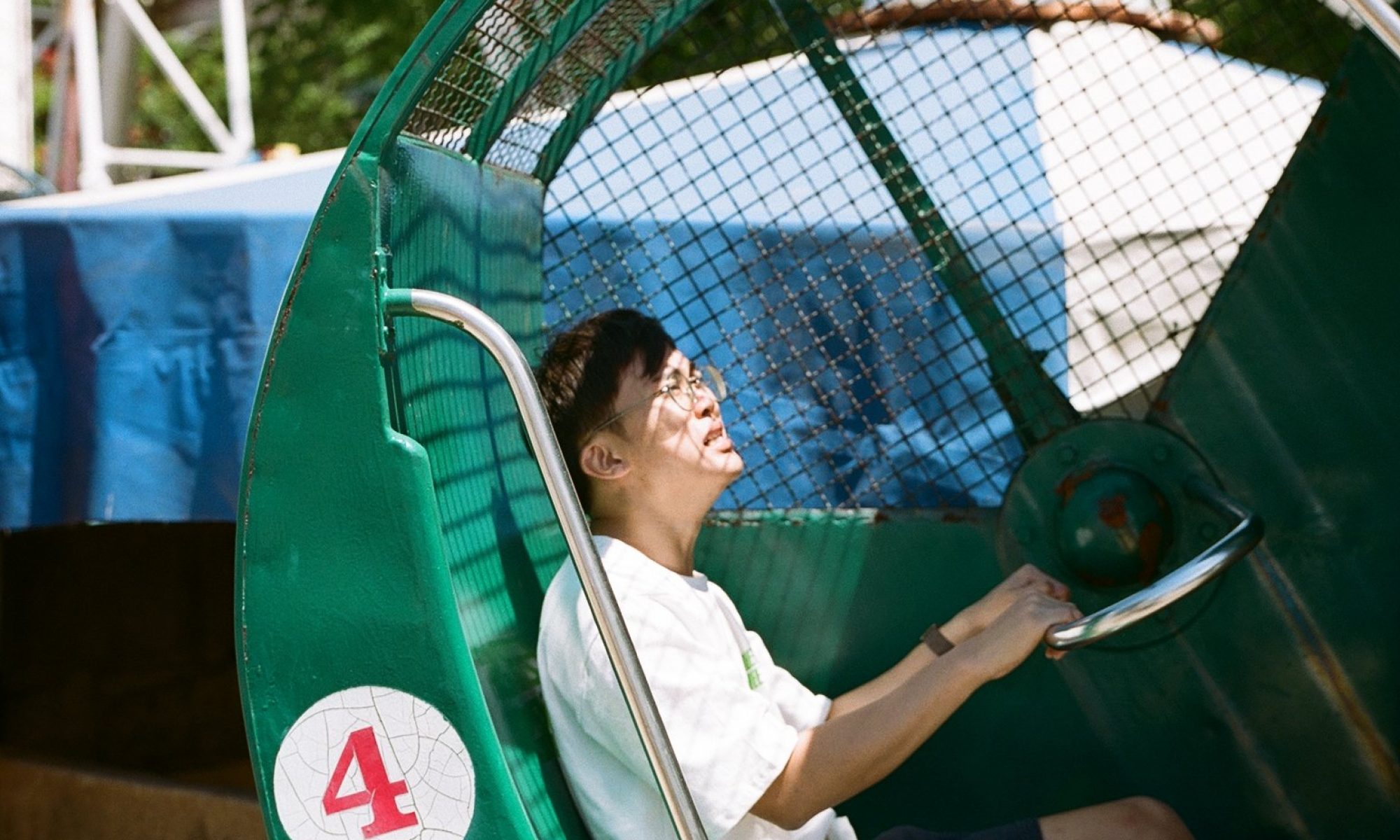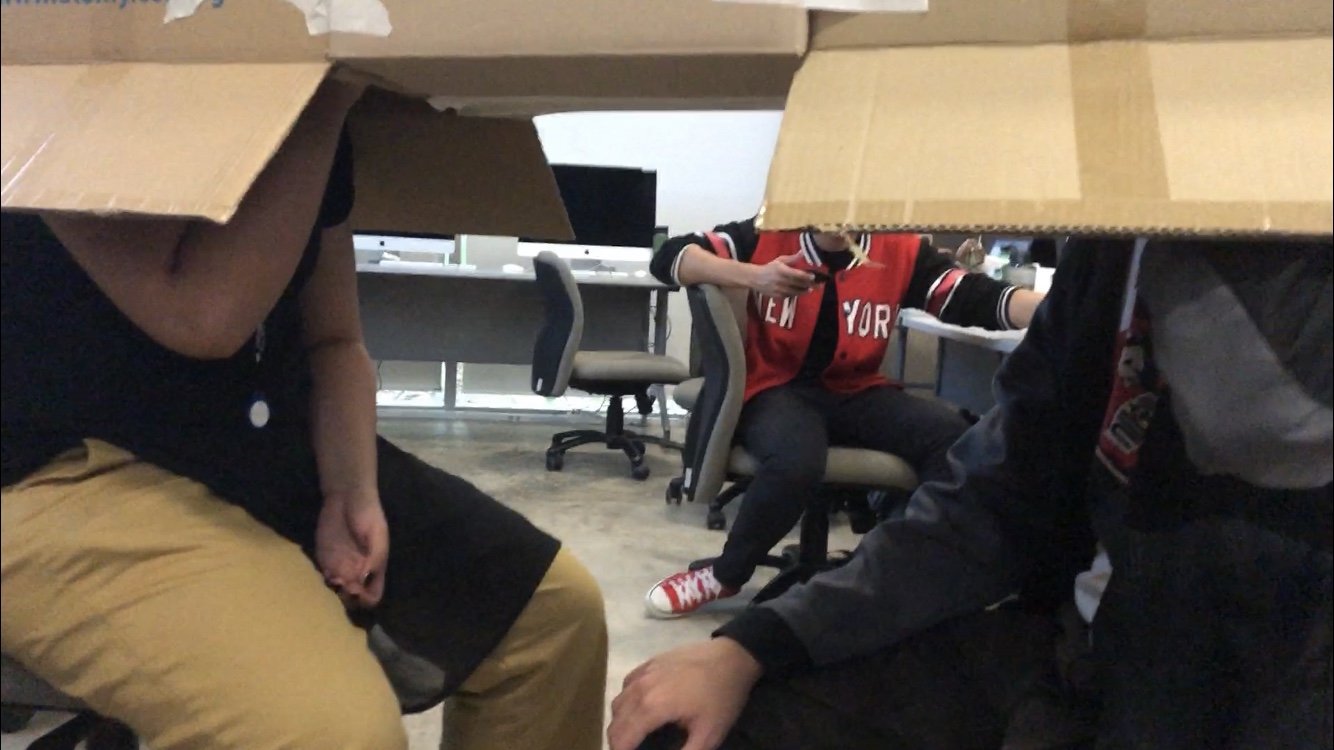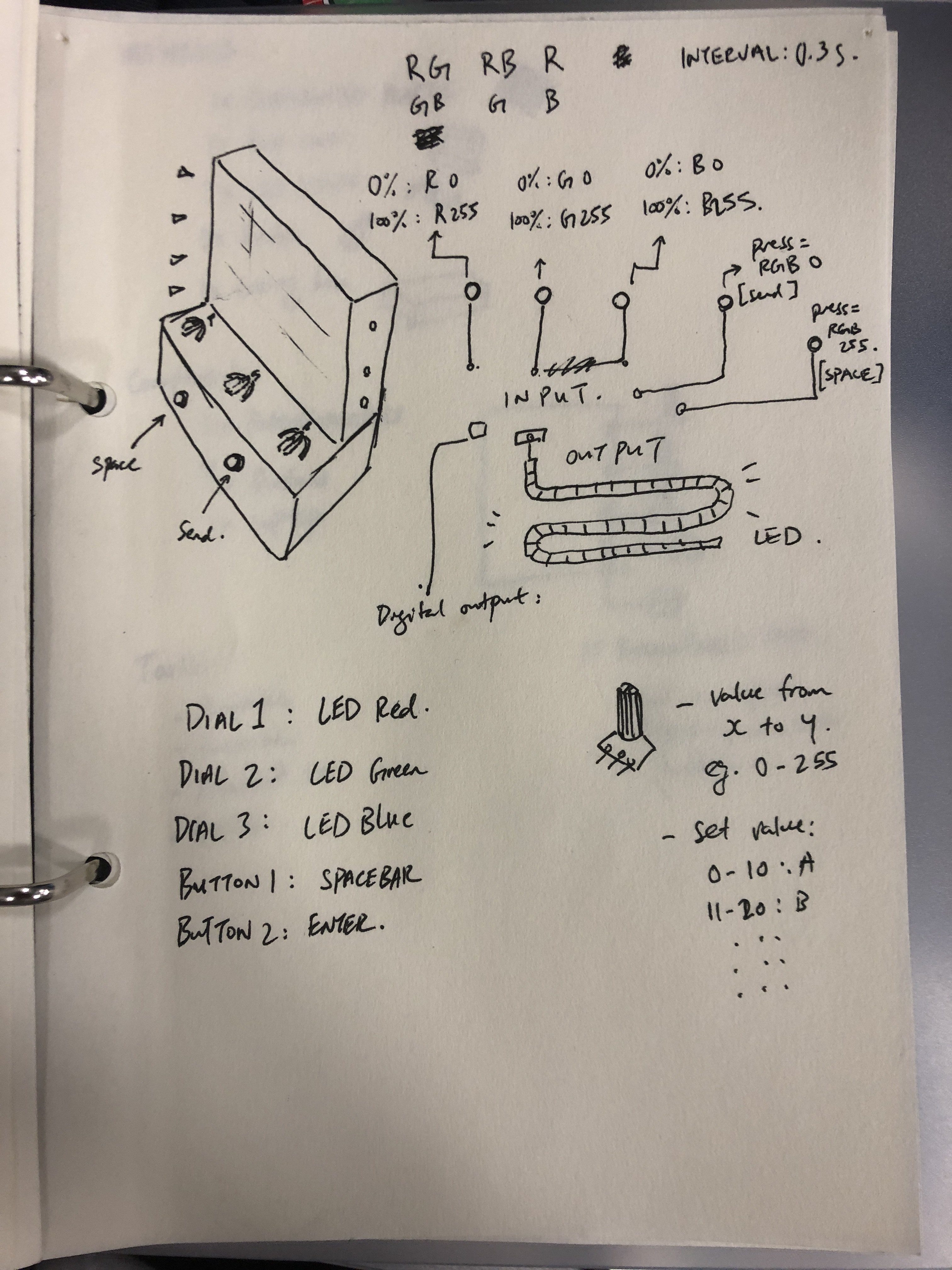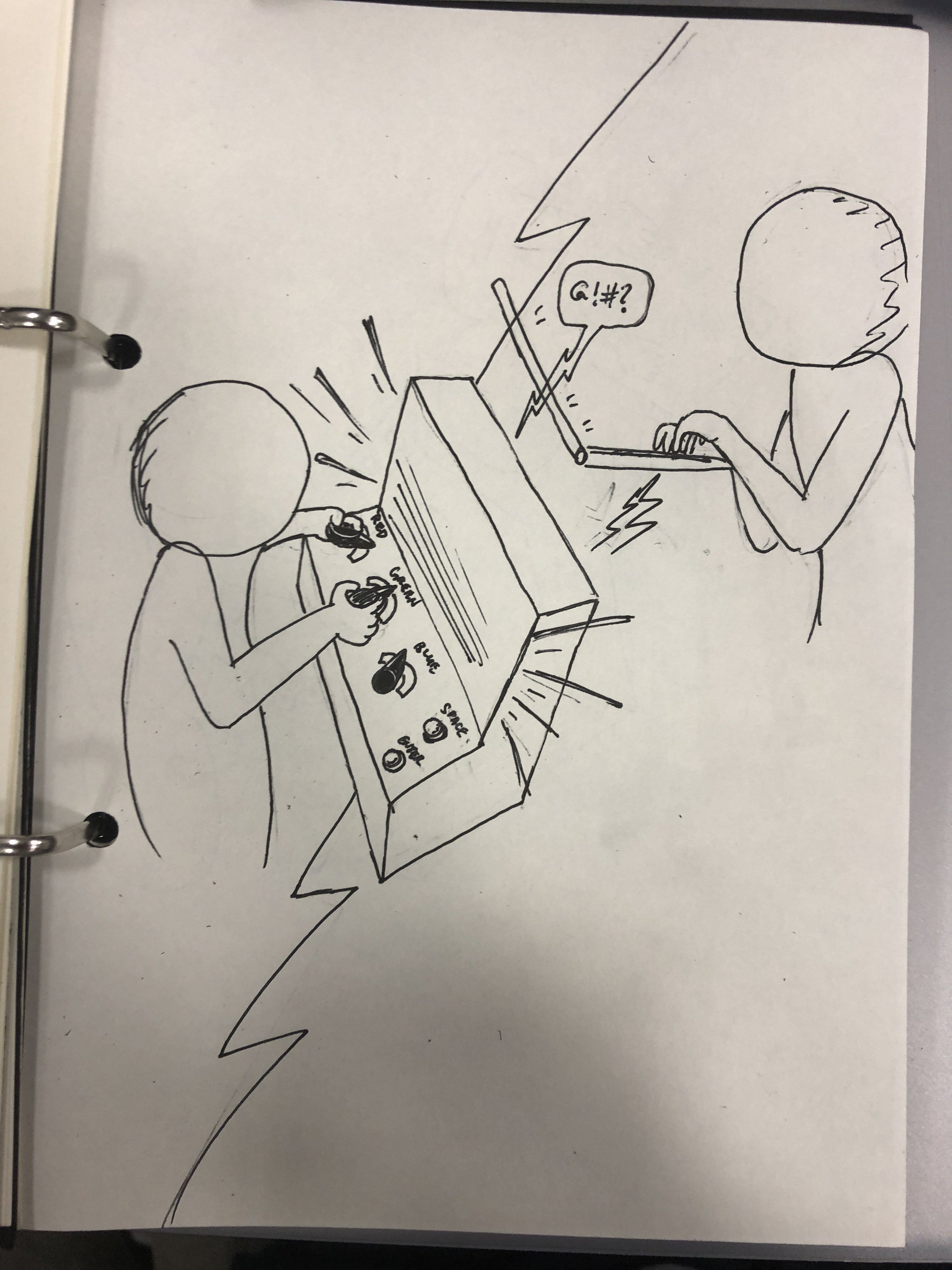Emo Telephone
Group: Joey, Bryan
“I… was always compared to my siblings as a kid. I was never better in my parents’ eyes.”
Meaning & Purpose
Tldr; Technology distances us.
This interactive work is a critique on the reduced consciousness we have of ourselves with others due to our everyday communication through technology. For example, we usually send a ‘LOL” text to others in response to something conventionally funny, but our facial expression in real life is actually a mere poker face. We hide behind our phones to communicate with others and slowly become numb to an actual conversation. What is then something that can cause or trigger a genuine reaction in us? To us, even though communication through technology is convenient and common now, this tends to push individuals further apart rather than allowing for a deeper level of connection. Through restricting the spatial dynamics of two participants, both individuals are required to stay intimate through eye contact while engaging in a communicative activity we find desensitised; which in this case would be talking on the phone. As such, participants shall acknowledge and focus on the physical presence of each other while gaining a sense of self-awareness as they engage in an intimate conversation, ultimately feeling vulnerable, but eventually possibly comfortable.
Materials:
- 3x Cardboard boxes
- Cutter + Tape (For assembling)
- 2x plastic cups
- 1x twine string
How it works
This interactive object will act like two helmets separated by a short fixed distance made by the cardboard boxes. Both participants will wear each helmet, and when they do so, they will be facing each other. The slit in each of their helmets will allow them to have eye contact with one another. There will be a hole at the top of the helmets to allow light to enter, so they can see each other and also have a small sense of external spatial orientation. They both then will use an analog telephone made using the cups and string to communicate. They can then only talk about their own self image and vulnerabilities and nothing else. This experience will go on for 10~15 minutes.
How it should feel
Depending on the type of participants, there will be varied results. The ideal results should be a sense of vulnerability at the beginning as they adjust with each other’s eye contact and conversation. As the conversation go, both participants should feel more empathetic towards the other person, and feel more aware of their own vulnerabilities, and as such feel more comfortable with each other.
Interference of spaces between 2 people + How Location comes into play
We try to restrict the physical space as much as possible so both participants can focus on each other’s presence. The restriction of space between both participants forces them to be aware of each other as well as of their shared experience, which is being trapped in a box with little awareness of what is going on beyond their helmets. Adding on to their experience with how they need to share their private moments and how they will be able to see the behaviour of the other person, it will heighten their 5 senses and make them self-conscious of both themselves and of each other. Both participants should be able to feel the distance between each other, yet seemingly brought closer to each other through the intimacy in their gaze and conversation. Location comes into play when both participants have to move in the same direction, the same way, or in the same location. This creates a mutual experience between both parties, giving the impression that they are both going through the same things i.e. the same hardships. They will “always walk together” and accept each other fully. We hope to find a balance between the push and pull of physical and emotional space.
Testing Phase

We gave both participants a topic: talk about their self image and their weaknesses. We gave them only 2 minutes to talk as we want to speed things up and also felt that we don’t want to put our classmates at a spot (it was pretty awkward).
The first 1 minute was spent trying to figure out how to operate the thing. The next 1 minute, both parties struggled to stay with the objective due to the difficulty of operating the low-fi machine. Both parties only made 2 exchanges about their weaknesses before we had to stop.
Here’s the video footage + the discussion:
Testing: https://youtu.be/OLlLlGz0BcE
Discussion: https://youtu.be/xbvaVNqFL8s
I (Bryan) believe that they talked about weaknesses due to it being the easier topic to talk about. Our plans on making our participants uncomfortable worked but it was more negative due to the short amount of time we give which did not allow the participants to open up enough. I also think that perhaps we have to alter the topics as it seems to be too personal.
During the discussion, Kee Yong also mentioned about how uncomfortable he is physically due to the height difference and the box. He also mentioned how the low-fi telephone did not work well as it is not easy to operate it in a tight space. Thus, overall, it was not a very successful test.
Improvements
What I can think of is:
- Change the form of the box. Instead of a solid box, it can be curtains. That will allow more flexibility while performing the same function.
- Change the topic. The topic is too personal and can become a negative experience for many people if it is not properly dealt with. The topic should be more open and something that allow each other to have a hearty conversation about. In this sense, we allow both parties to feel the joy of using a telephone rather than dealing with the negative aspects of talking through a telephone.
- Use a real phone. As we thought we were going to develop the project further, we intended to switch the low-fi telephone with real phones in future so it eases the entire experience.











